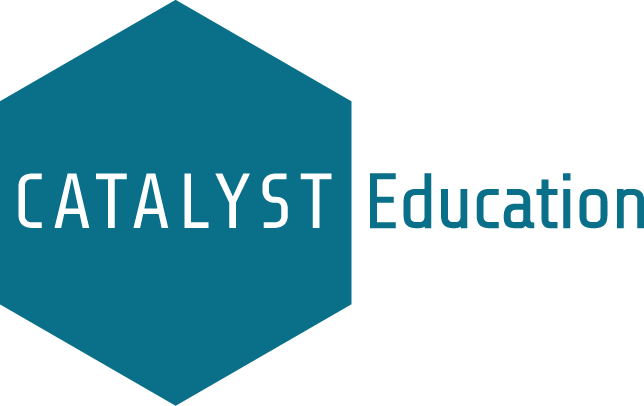Reigniting the Spark: Making Learning Fun Again
Every weekday, at exactly 3:35pm, I pick my children up from school. As the dismissal bell rings, it is accompanied by giggling, shrieking, and the quick patter of little feet as kids burst through classroom doors. My girls greet me with hugs and smiles, excitement eagerly waiting behind their faces to tell me all about their day. It is unquestionably one of my favorite parts about being the parent on pick-up duty.
The short car ride home consists mostly of voices competing over each other. The school lunch is critiqued and rated, while “specials” like music, PE, art, and library are highlighted. As much as I enjoy hearing who was mean to whom on the playground or who didn’t follow the rules during Four Square, what stands out most is how genuinely excited my kids are about what they’re learning.
My kindergartener is just beginning to read and write. If I give her the green light, she’ll proudly tell me which cuss words she can spell—and more importantly, which ones contain digraphs. (She insists she overheard them from a fifth grader. My fifth grader, for the record, denies any involvement, naturally.)
My third grader is riding high on multiplication facts and is practically begging to start long division. But my fifth grader… well, her enthusiasm is running on fumes. She’s already dreading next week’s statewide testing. Understandably so, standardized tests aren’t exactly known for inspiring academic joy.
And this gets me thinking: at what point does learning stop being fun? I’ve seen this shift firsthand, especially in my college-level students taking my general chemistry course. Aside from the occasional student whose mind is genuinely blown when orbital diagrams suddenly click with periodic trends (I know, thrilling - no cap), most of the class couldn’t muster much excitement for why the sign of ΔG° in spontaneous reactions ties into large values of the equilibrium constant. While I understand that college students are balancing a lot these days, I can’t help but wonder: when does learning shift from something joyful to something... endured?
To my surprise, the decline in the joy of learning starts as early as the age of 9, when kids transition from learning to read vs reading to learn. During this time, many students experience a drop in curiosity and engagement. This decline is more noticeable around middle school and continues through high school.
Over the years, both in research and in the classroom, it’s become clear that there are a few common reasons why learning starts to lose its fun. The constant pressure to perform (think grades, tests, and standardized assessments) can turn school into a source of anxiety instead of curiosity. On top of that, mistakes are often treated as failures rather than valuable learning moments, making students more afraid to take risks. When what they’re learning feels disconnected from the real world, it’s easy to see why their interest fades. Add in the monotony of repetitive tasks and drill-style teaching, and it’s no wonder the joy gets stripped away. And perhaps most importantly, when students don’t have any choice in what or how they learn, it becomes harder to stay engaged.
As someone deeply passionate about student engagement and bringing the fun back into learning, I couldn’t be more thrilled about my recent career pivot at Catalyst Education. With the launch of Spark, our new lecture-based platform designed to boost student motivation, engagement, and higher-order thinking, I find myself grinning from ear to ear. We’re building thoughtful solutions to the exact questions that have kept me pondering: why does learning stop being fun, and what can we do about it?
Enter: student autonomy. With Spark’s fully automated token economy, students get to take ownership of their learning. The foundation of a token economy is the idea that students earn tokens, not points, as rewards to reinforce positive behavior. They can use earned tokens to request extensions or unlock additional attempts on assignments, taking the pressure off and reframing mistakes as part of the learning process.
And here's the quiet genius in all of this: when students feel more in control, when they’re given the tools to manage their own learning, they’re a lot less likely to resort to academic dishonesty. It’s harder to justify copying an assignment when they actually care about the outcome–and can use a token to buy themselves a bit more time. Spark helps remove the panic that drives dishonest behavior in the first place, because when the system is built with trust, flexibility, and a little built-in grace, students tend to rise to the occasion. Turns out, when people feel like they have a choice, they’re more likely to make the right one.
From an instructor point of view, Spark offers complete control over a course, from customizing textbook content to incorporating real-world, application-based assignments that leverage AI-assisted grading to tap into higher-order thinking skills from Bloom’s taxonomy. This flexibility empowers instructors to tailor their teaching to their style and meet the unique needs of their students. Plus, with the fully automated token economy handling the busywork, instructors can spend less time on administrative tasks and more time crafting meaningful, engaging learning experiences.
Of course, there’s still work to be done, the system isn’t fixed overnight. But every time I see my kids excited to share what they’ve learned, I feel hopeful. At Catalyst Education, we’re building something that matters. Because the truth is, there is sh-(that’s a digraph)-it to get done. And I’m all in.


